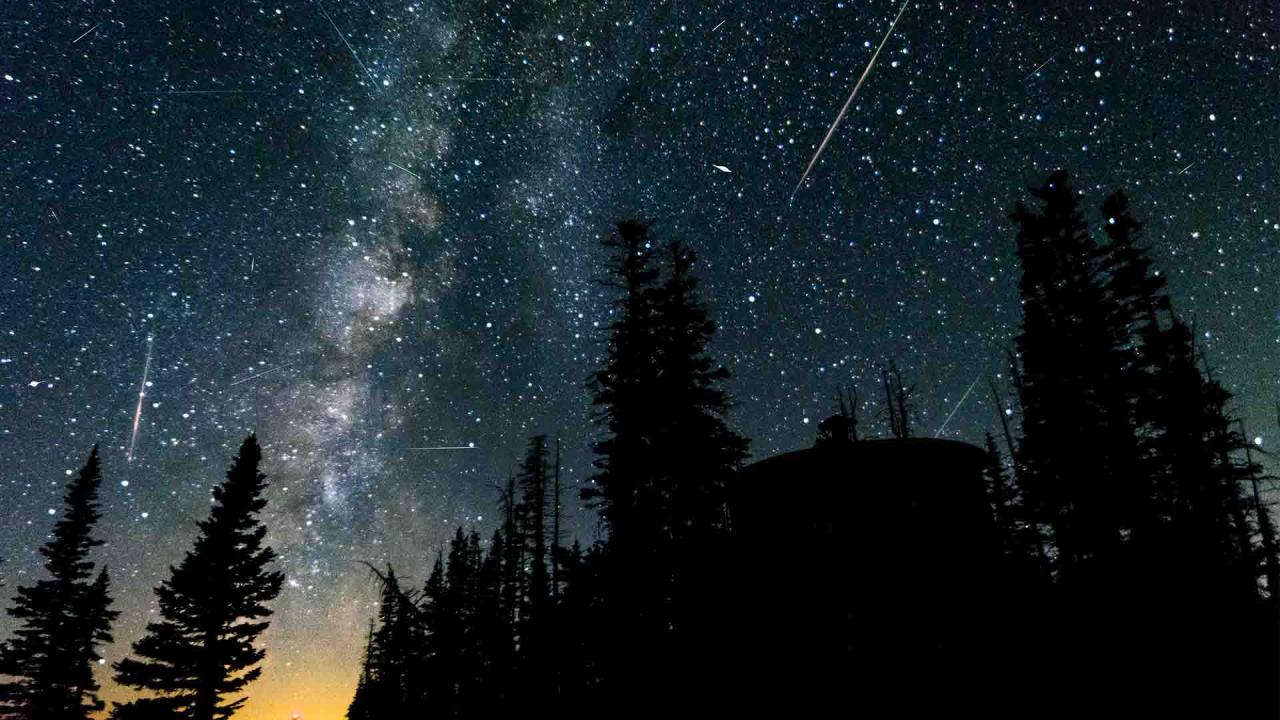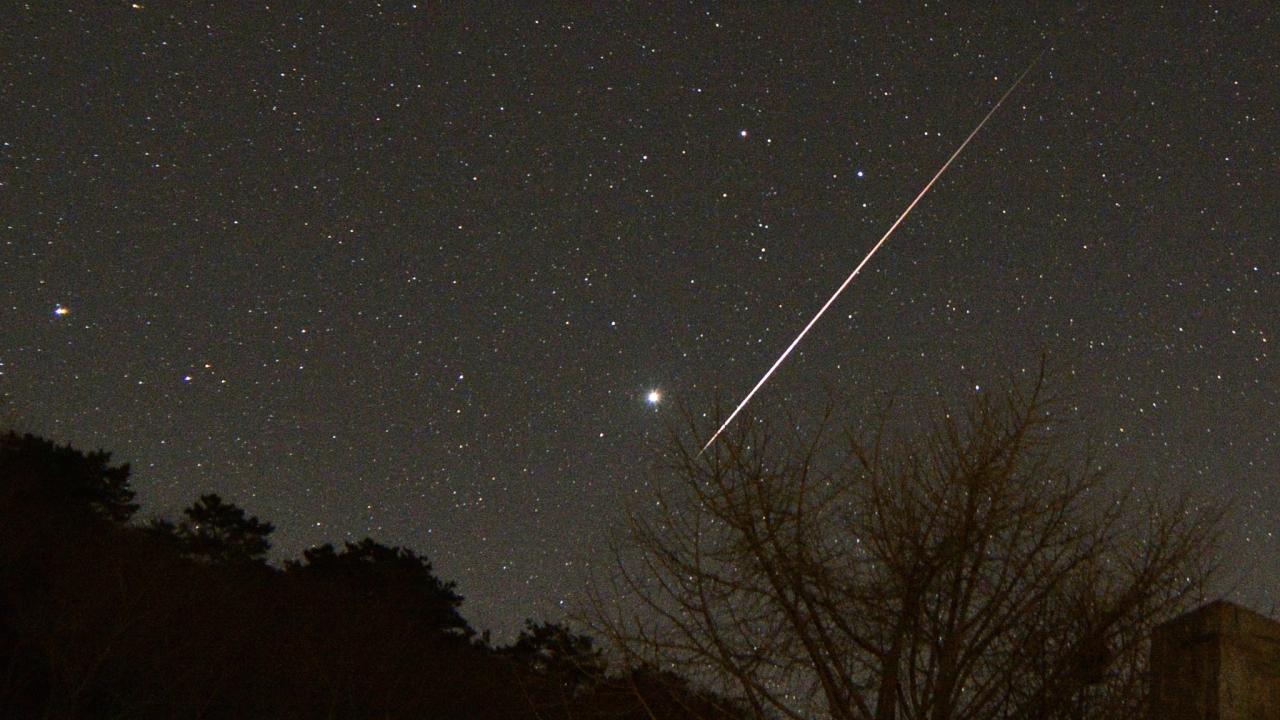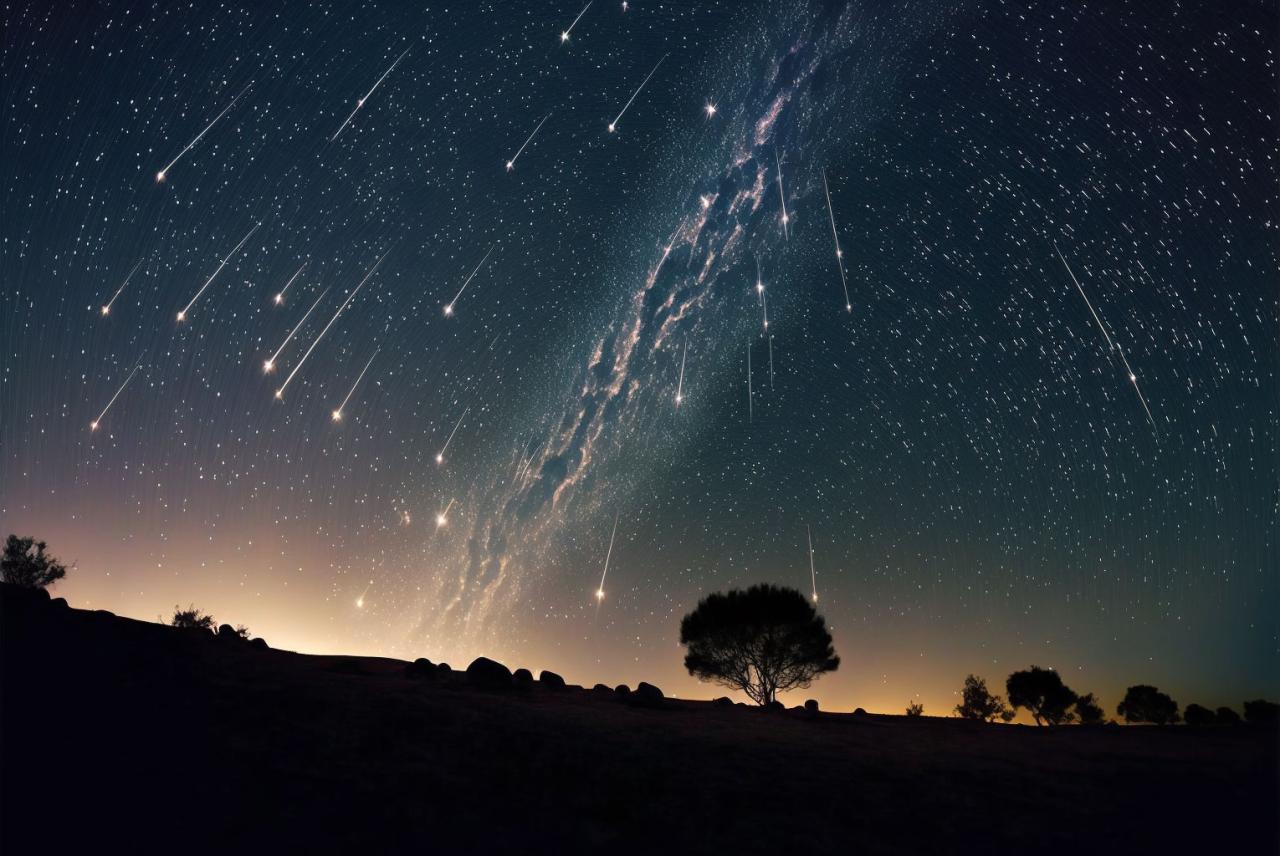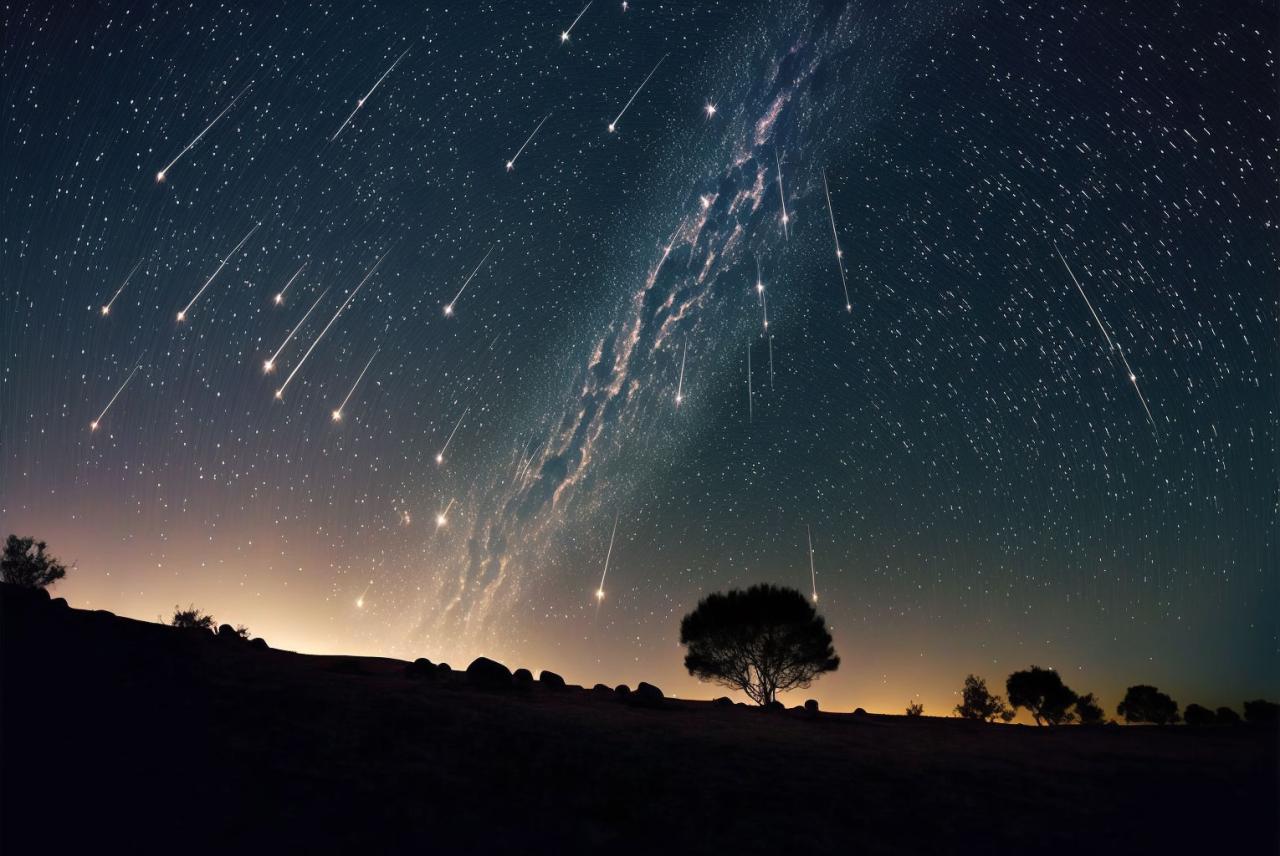Quadrantid meteor shower to light up skies – here’s the best way to witness this celestial spectacle! Get ready for a dazzling display as the Quadrantids, known for their bright meteors and potential fireballs, peak in the night sky. This guide will walk you through everything you need to know, from finding the best viewing spots to capturing stunning photos, ensuring you don’t miss this incredible event.
We’ll cover optimal viewing times and locations worldwide, essential equipment (or lack thereof!), techniques for observation and astrophotography, safety tips, and even a touch of the mythology surrounding meteor showers. Whether you’re a seasoned stargazer or a curious newcomer, we’ve got you covered.
Peak Viewing Times and Locations for the Quadrantid Meteor Shower
The Quadrantid meteor shower, known for its bright meteors and potential high rates, offers a spectacular celestial display. Optimizing your viewing experience requires understanding the peak viewing times and choosing a location with minimal light pollution and favorable weather conditions. The shower’s peak is quite short, making precise timing crucial.
Peak Viewing Times and Locations Across the Globe
The peak of the Quadrantid meteor shower typically occurs in early January. However, the exact time varies based on location due to differences in time zones. A global map illustrating optimal viewing locations would show areas with dark skies (far from city lights) and favorable weather forecasts. This would likely highlight rural areas in the Northern Hemisphere, where the radiant point is most visible.
| Location | Peak Time (Local) | Expected Meteor Rate (per hour) | Viewing Conditions |
|---|---|---|---|
| New York City, USA | Early morning, January 4th (Example time – needs specific calculation based on year) | 60-120 (variable, depends on conditions) | Potentially partly cloudy, significant light pollution |
| London, UK | Early morning, January 4th (Example time – needs specific calculation based on year) | 40-80 (variable, depends on conditions) | Potentially clear, moderate light pollution |
| Tokyo, Japan | Morning of January 4th (Example time – needs specific calculation based on year) | 20-60 (variable, depends on conditions) | Potentially clear to partly cloudy, moderate to high light pollution |
| Rural Alberta, Canada | Early morning, January 4th (Example time – needs specific calculation based on year) | 100-120+ (potential for high rates due to dark skies) | Potentially clear, minimal light pollution |
Observing the Shower: Equipment and Techniques
While the Quadrantids are best enjoyed with the naked eye, some equipment can enhance the viewing experience. Different observation techniques cater to various preferences and levels of experience. Proper preparation is key to a successful viewing session.
Equipment and Observation Techniques

For optimal viewing, a dark location away from city lights is paramount. While naked-eye observation is sufficient, binoculars can help locate fainter meteors. Telescopes are less useful as they have a narrow field of view, unsuitable for the wide expanse of the meteor shower. Stargazing apps can assist in identifying constellations and the shower’s radiant point.
- Naked-eye viewing: Provides the widest field of view, ideal for catching the most meteors.
- Binoculars: Enhance visibility of fainter meteors.
- Stargazing apps: Help locate the radiant point and identify constellations.
Preparing for a Meteor Shower Viewing Session
- Choose a dark location away from city lights.
- Check the weather forecast for clear skies.
- Bring a comfortable chair or blanket.
- Dress warmly, even if it’s not extremely cold.
- Bring a red flashlight to preserve night vision.
- Download a stargazing app to help locate the radiant point.
Understanding the Quadrantids
The Quadrantid meteor shower originates from a unique source and possesses distinct characteristics that set it apart from other prominent showers. Understanding its origin and radiant point is essential for maximizing your viewing opportunities. A comparison with other well-known showers like the Perseids and Geminids will highlight its unique features.
Want to catch the awesome Quadrantid meteor shower? Find a dark spot away from city lights for the best viewing. While you’re gazing upwards, it’s worth noting that there’s some other news going around: check out this article about Viral disease HMPV is on the rise among kids in China — what is it? Then, get back to stargazing – bundle up warm and enjoy the show!
Origin and Characteristics of the Quadrantids
Unlike most meteor showers that originate from comets, the Quadrantids’ parent body is believed to be an asteroid, 2003 EH1, or possibly the remnants of a disintegrated comet. Its radiant point appears in the constellation Boötes (near the former constellation Quadrans Muralis, hence the name).
Comparison of Meteor Showers
| Feature | Quadrantids | Perseids | Geminids |
|---|---|---|---|
| Parent Body | Asteroid 2003 EH1 (or cometary remnant) | Comet 109P/Swift-Tuttle | Asteroid 3200 Phaethon |
| Peak Activity | Early January | August | December |
| Meteor Rate | 60-120+ (potentially higher under ideal conditions) | 50-100 | 120+ |
| Meteor Characteristics | Bright, fast | Bright, moderate speed | Moderate brightness, slower speed |
Photography and Astrophotography of the Quadrantids: Quadrantid Meteor Shower To Light Up Skies – Here’s The Best Way To
Capturing the beauty of the Quadrantid meteor shower through photography requires specific techniques and equipment. Whether using a simple camera or dedicated astrophotography gear, understanding the settings and composition is crucial for stunning images. A step-by-step guide will simplify the process.
Techniques for Capturing Images
For basic photography, a camera with a wide-angle lens and a fast shutter speed is recommended. For astrophotography, a DSLR or mirrorless camera with a tripod and a wide-angle lens is necessary. Long exposure times are crucial to capture the trails of meteors, but this requires careful settings to avoid overexposure and light pollution.
Step-by-Step Guide to Astrophotography
- Set up your camera on a sturdy tripod in a dark location.
- Use a wide-angle lens (e.g., 14-35mm).
- Set your camera to manual mode.
- Choose a high ISO (e.g., 1600-3200) to capture faint meteors.
- Set a wide aperture (e.g., f/2.8 or wider).
- Use a long exposure time (e.g., 15-30 seconds).
- Use a remote shutter release or camera’s self-timer to avoid camera shake.
- Experiment with different settings to find what works best.
- Compose your shots to include interesting foreground elements (optional).
Safety and Considerations for Meteor Shower Viewing

While meteor shower viewing is a rewarding experience, safety precautions are necessary. Cold weather, dark locations, and potential hazards need to be considered. Proper preparation and awareness are crucial for a safe and enjoyable viewing experience.
Safety Hazards and Precautions
Cold temperatures, especially during winter months, pose a significant risk. Dark locations can present tripping hazards. It’s important to be aware of your surroundings and dress appropriately.
Safety Tips for Meteor Shower Viewing, Quadrantid meteor shower to light up skies – here’s the best way to

- Dress warmly in layers.
- Bring a warm blanket or sleeping bag.
- Bring a flashlight with a red filter to preserve night vision.
- Bring snacks and drinks to stay hydrated and energized.
- Tell someone where you are going and when you expect to return.
- Avoid venturing into unsafe areas.
- Be mindful of wildlife.
Mythology and Cultural Significance of Meteor Showers
Meteor showers have held cultural and mythological significance across various societies throughout history. Different cultures have developed unique interpretations and legends surrounding these celestial events, reflecting their beliefs and worldviews. A table will highlight some examples.
Want to catch the awesome Quadrantid meteor shower? Find a dark spot away from city lights for the best viewing. If you’re a techie, maybe you’re also a full stack developer who could build an app to predict meteor shower activity! Either way, bundle up warm, grab a comfy chair, and prepare to be amazed by the celestial show.
Remember to check the forecast for clear skies before you head out!
Cultural Interpretations of Meteor Showers
| Culture | Interpretation |
|---|---|
| Ancient Greeks | Tears of the gods |
| Native American Tribes (various) | Messages from ancestors, spirits, or deities |
| East Asian Cultures | Varying interpretations, often associated with good or bad fortune. |
Illustrative Descriptions of the Quadrantid Meteor Shower
The visual experience of the Quadrantid meteor shower is truly remarkable. The meteors are often bright and fast, leaving behind trails that can persist for a few seconds. The frequency of the meteors, particularly near the peak, creates a mesmerizing spectacle. Evoking the experience through detailed descriptions enhances the reader’s anticipation.
Visual Experience and Potential Sights
Imagine a dark, clear night. Suddenly, a bright streak flashes across the sky, leaving a glowing trail that slowly fades. This is followed by another, and another, each with its unique brightness and color. Some meteors might be especially bright fireballs, while others leave behind persistent trains, glowing trails that linger for several seconds after the meteor has passed.
The sheer frequency of these events, especially near the peak, creates a sense of awe and wonder. The shower’s radiant point, appearing in the constellation Boötes, serves as a focal point for these dazzling displays.
Conclusive Thoughts
Don’t miss the chance to experience the magic of the Quadrantid meteor shower! By following the tips and advice provided, you’ll be well-prepared to enjoy this breathtaking celestial event safely and effectively. Remember to check the weather forecast, dress warmly, and find a dark location away from city lights for the best viewing experience. Happy stargazing!
FAQ Explained
How long does the Quadrantid meteor shower last?
Want to catch the awesome Quadrantid meteor shower? Find a dark spot away from city lights – that’s key! While you’re waiting for the show, check out some hockey news: Canucks recall Arturs Silovs, Thatcher Demko remains out vs. Then, get comfy, look up, and enjoy the celestial display! Remember to bundle up – it’s going to be cold!
The shower itself is active for a few weeks around its peak, but the peak viewing period is relatively short, typically lasting only a few hours.
Do I need a telescope to see the Quadrantids?
No, you don’t need a telescope. The Quadrantids are best viewed with the naked eye, allowing you to see a wider area of the sky. Binoculars might help spot fainter meteors.
What’s the best time to start watching?
Ideally, start observing after midnight, as the radiant point (where the meteors appear to originate) will be higher in the sky, offering better viewing opportunities.
What if it’s cloudy on the peak night?
Unfortunately, clouds will obstruct your view. Check forecasts and consider alternative nights close to the peak if conditions aren’t favorable.
